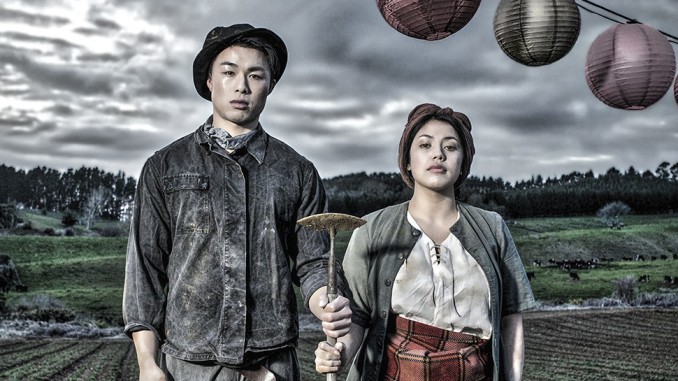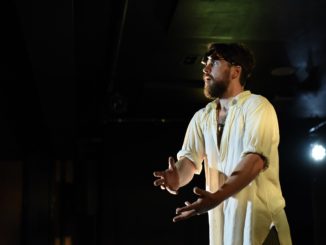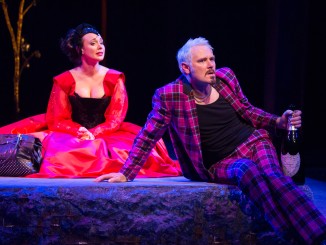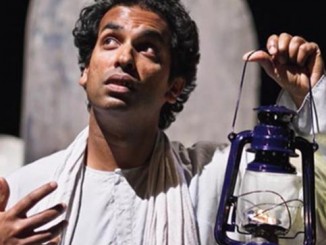
[Pertinent Then and Now]
The set is a quiet ghost of a fantasy. Cloth draped from driftwood billows outward, echoing a midnight nature. Several levels built from wood allow the actors to play into contexts of hierarchy and distance. Set designer John Verryt does well, matching the set to mythic histories.
The Mooncake and the Kūmara, written by Mei-Lin Te Puea Hansen and directed by Katie Wolfe, feels comfortably rooted in tradition, inserting idioms into the storyline with ease. It blends folklore and nonfiction together to create a memoir not bound to its own retelling.
Loosely based off a real life story, the play sends us back to 1920’s rural New Zealand in a time of Anti-Chinese xenophobia and a crippling loss of rights to Tangata Whenua. Hansen has crafted a multicultural, multilingual story of loss and love, gleaned from her own family histories. It’s pertinent to watch now as ever: displaying a sense of unity through struggle amongst rising xenophobia toward immigrants and Māori still struggling to have their indigenous rights recognised and prioritised.
It’s a very hard task to try and create a piece that talks to real history, as well as one that feels both natural and multilingual. At some moments the attempt to fit three languages into the plot feels too gargantuan, too forcibly inserted. When it works however, it comes as a soaring blend of emotions, displaced histories and voices. Most touching are the gestures, the small moments of cultural nuance that arise from great acting – especially from Charles Chan and Waimihi Hotere respectively. The elders in the work feel like gatekeepers of cultural knowledges, allowing us into a harsh gothic world the younger characters chafe and test themselves against.
The depiction of Chinese as stubborn and self-secluding, and Māori as wary and tired, felt truthful without being stereotypical. The play between these evoke many high points and laughs from the audience. Leilan’s character, played by Katlyn Wong is similarly compelling, interjecting the narrative with moments of abstraction that keep us speculating as to her importance. The scenes I feel the most touched by are ones to do with cross cultural reference, studded with beautiful moments of music, waiata and an exchange of flutes.
The “villain” character of Roger Finlayson (Jeremy Randerson) felt a little bit underdeveloped, with a slapdash backstory to make him more likable. There may have been better ways of making him seem complex or understandable, instead of monologic insertions that mean the play runs a touch too long. The highest point of tension comes quite late in the second art, and rushes to resolve an ending that could be left as complicated and loose.
Overall, this show is is a joyful showcase of identity and very attentive to its subject matter. It’s luminous and promising.
The Mooncake and the Kūmara plays until 8 July. Details see Q.




Leave a Reply